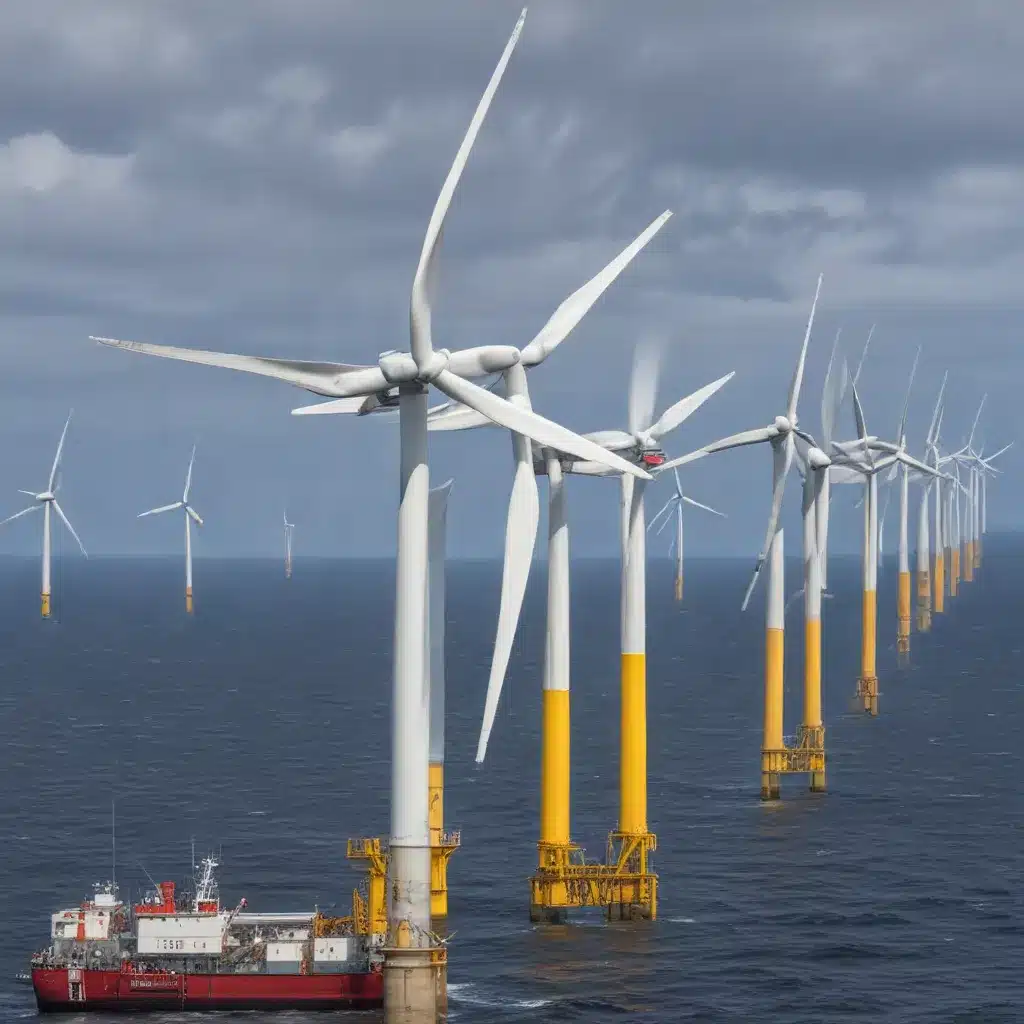
Offshore Wind Advancements: Driving Europe’s Renewable Energy Transition
The rapid expansion of offshore wind power is positioning Europe as a global leader in the renewable energy revolution. With ambitious targets to achieve net-zero emissions by 2050, European nations are harnessing the immense potential of their coastlines to dramatically scale up clean electricity generation. Offshore wind’s ability to deliver high-capacity, reliable power at scale makes it a cornerstone of the continent’s energy transition.
Offshore Wind Energy
Offshore wind farms located in coastal waters offer several key advantages over their onshore counterparts. The stronger, more consistent winds found offshore allow turbines to generate significantly more electricity per unit, with capacity factors frequently exceeding 50%. Furthermore, offshore sites often face less public opposition and can be developed at much larger scales, enabling rapid capacity additions in a relatively short timeframe.
Wind Power Generation
According to the International Renewable Energy Agency (IRENA), global offshore wind capacity must grow fourteen-fold by 2030 to keep the Paris Agreement’s 1.5°C target within reach. Europe is poised to be at the forefront of this massive buildout, with the potential to reach almost 500 GW of offshore wind by the end of the decade. Countries like the Netherlands, Germany, and the United Kingdom are leading the charge, leveraging their extensive coastlines and well-developed supply chains.
Technological Advancements
Continuous innovation in offshore wind technology is further bolstering the sector’s growth potential. A recent joint study by IRENA and the European Patent Office reveals that patent filings for offshore wind solutions have increased by 18% on average over the past two decades. Key areas of progress include next-generation turbine designs, floating foundations for deeper waters, and advanced grid integration solutions to seamlessly connect offshore wind farms to onshore power networks.
Grid Integration
Integrating large-scale offshore wind farms into electrical grids presents unique technical challenges. Transmission system operators (TSOs) are increasingly turning to high-voltage direct current (HVDC) technology to efficiently transport electricity generated offshore over long distances. For example, GE Vernova’s recently launched HVDC Competence Center in Berlin will support the development of cutting-edge grid solutions to accelerate Europe’s energy transition.
Renewable Energy Transition
The rapid growth of offshore wind power is a critical component of Europe’s broader shift towards a sustainable, decarbonized energy system. Coordinated policy frameworks and investment mechanisms are driving this transformation, positioning the continent as a global renewable energy leader.
European Policy Frameworks
The European Union’s ambitious climate and energy targets, such as the binding goal of reducing greenhouse gas emissions by at least 55% by 2030, have galvanized member states to prioritize offshore wind deployment. Initiatives like the EU’s Renewable Energy Directive and the European Green Deal provide a robust policy foundation, complemented by national-level strategies and incentives that are tailoring the transition to regional needs.
Economic Implications
The expansion of offshore wind not only delivers clean energy but also generates significant economic opportunities. A thriving offshore wind industry is creating thousands of high-skilled jobs, stimulating local supply chains, and attracting substantial investment from both the public and private sectors. As the technology matures and scales, the levelized cost of offshore wind power is expected to continue declining, making it an increasingly attractive and affordable option for utilities and consumers alike.
Environmental Considerations
Beyond its climate benefits, the growth of offshore wind also offers important environmental advantages. By harnessing the power of the wind, these projects avoid the emission of harmful greenhouse gases and air pollutants associated with fossil fuel-based electricity generation. Moreover, the offshore environment provides a unique habitat for marine ecosystems, which can coexist with carefully designed wind farm installations that minimize ecological disruption.
Offshore Wind Market
The global offshore wind market is experiencing unprecedented expansion, with Europe at the forefront of this dynamic growth.
Global Trends
According to IRENA, the world’s total installed offshore wind capacity surpassed 55 GW in 2022, with Europe accounting for over 80% of this figure. China, the United States, and several Asian countries are also rapidly ramping up their offshore wind ambitions, indicating the technology’s truly global appeal.
Regional Dynamics
Within Europe, countries like the United Kingdom, Germany, and the Netherlands have emerged as offshore wind powerhouses, leveraging their extensive coastlines and well-developed supply chains. Newer players, such as Poland and Ireland, are also making significant strides in this domain, attracted by the substantial economic and environmental benefits.
Investment Opportunities
The offshore wind sector’s robust growth trajectory is drawing the attention of a diverse set of investors, from utilities and independent power producers to infrastructure funds and green energy startups. Favorable regulatory frameworks, such as long-term power purchase agreements (PPAs) and government-backed incentives, are further enhancing the sector’s appeal and de-risking investments.
Challenges and Barriers
Despite the immense potential of offshore wind, the industry still faces several challenges that must be addressed to ensure a smooth and accelerated transition.
Regulatory Hurdles
Navigating the complex web of permits, environmental assessments, and grid connection requirements can often slow down the development of offshore wind projects. Streamlining these processes and ensuring regulatory alignment across European markets will be crucial for unlocking the sector’s full potential.
Infrastructure Limitations
Offshore wind farms require extensive supporting infrastructure, including specialized vessels, ports, and grid connection facilities. Ensuring the timely development of this infrastructure, particularly in emerging markets, will be essential for enabling the rapid scale-up of offshore wind capacity.
Public Acceptance
While offshore wind projects generally face less public opposition than their onshore counterparts, gaining local community support remains important. Proactive stakeholder engagement, addressing environmental concerns, and demonstrating the broader societal benefits of offshore wind development will be key to maintaining public acceptance.
The European Future Energy Forum provides a dynamic platform for industry leaders, policymakers, and innovators to collaborate in shaping the continent’s renewable energy future. By harnessing the power of offshore wind, Europe is poised to lead the global transition towards a sustainable, decarbonized energy system, setting an inspiring example for the rest of the world to follow.







